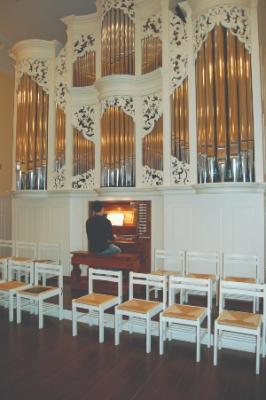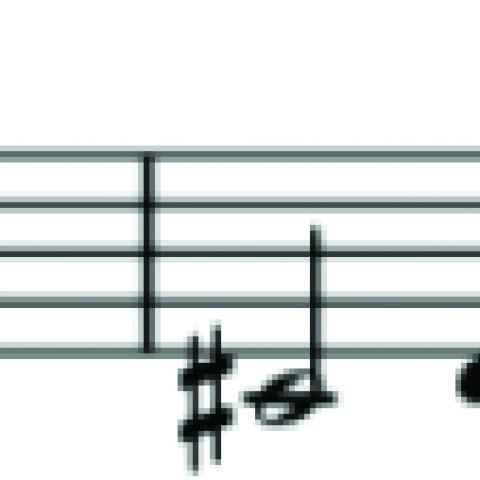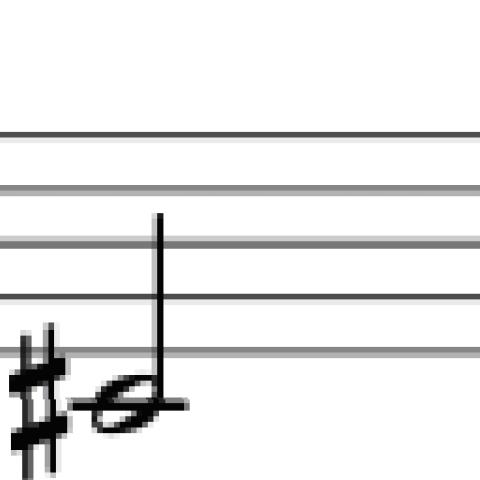
A word
Over the last year or so I have attended more cultural and artistic events than I have in several years. I have had periods of doing more of this sort of thing than I had on average before the pandemic: catching up on theater, dance, music, art galleries, one figure skating exhibition, poetry readings, lectures, movies, etc. This has been extraordinarily satisfying, life-affirming, and a good antidote to a certain claustrophobia that had rather naturally set in before. I have noticed that as it seemed to become safe to go out and experience public life in these ways, I pursued doing so almost frantically. I get maybe 100 emails per day informing me about some sort of concert or play, and for quite a while I reacted to each such email by thinking “Yes, I have to do this!!” Recently I have noticed that this exaggerated fervor has simmered down to something more normal.
Upon attending theater, concerts, and such, I noticed that I was beginning to think about performance—not so much the phenomenon as the word itself. It felt like I was saying to myself things such as: “How nice to be attending a performance again;” “I haven’t been to a performance in a long time;” “I had never gone this long without experiencing a performance.” The word began to sound weird to me, the way a word does once in a while if you hear it enough. Yet, it also sounded interesting. I began to seek out instances of the words “performance,” “performer,” and “perform.” And though it was not the point initially, I became interested in the connections between that word and our relationship to it as musicians. In particular, I wonder what holding that word up to the light a bit might say about the perennial problem that we all face: that performance is hard, nerve wracking, and productive of anxiety. Certainly most of what is so difficult about performing music is intrinsic to the activity, not something that is created by the word itself. However, the word may shape expectations of feeling to some extent.
By chance these musings about the word “performance” tie in with something that I had planned to write about anyways, and that will form the subject of the next column.
Performance
So what about that word “performance?” Below is a potpourri of some of the ideas, observations, and questions that have been going through my head.
Performance is used in the arts (or the “performing arts”) to refer to a situation in which someone provides a public exhibition of their art. What are the performing arts? Is it interesting to suggest that they are arts that involve movement through time? That is, movement through time when they are being taken in by a patron, customer, or audience member. Everything exists in time, so a painting or sculpture exists in time. When someone looks at it and focuses on or appreciates it, that takes time. But the art is not using time.
There are some moving sculptures. If that is not “performance,” why not? Presumably because the sculpture has no consciousness or volition, and the person who made the sculpture is not the one doing the moving. So if something is a “performance,” someone has to be doing the performance in real time, though not necessarily at the same time that the audience is experiencing it. Acting in a movie or television show is just as much “performance” as acting in the theater.
We certainly would say that an orchestra gives “a performance.” But would we say that of an individual orchestra member? “I love (or hated) his performance of the oboe solo in such-and-such a symphony.” “She gave a great (or terrible) performance of the opening horn solo in Schubert’s Ninth.” Probably not. We would say, “I liked (hated) the way she or he played that passage.”
What about conductors? We might say, “That conductor gave a great performance of that symphony last night.”
What about in church? Would we say that someone gave a performance of a certain piece as prelude or offertory? Maybe, though I think that in reality we would be more likely to use a phraseology involving “playing” rather than “performing.” “That prelude that you played today was a favorite of mine.” How about with hymns? I would be astonished if anyone said, “I loved her performance of Hymn #284,” rather than “I loved how she played. . . .” If I am right about that, what does that tell us? When you accompany a hymn in church you are, first of all (like a member of an orchestra), not creating the whole of the musical, artistic entity. You are also doing something that is only partially directed at the listeners/audience, or in this case the congregation, whom we have stipulated as part of the “performance” situation—that is, only partly directed at them as listeners. You are helping them to sing, and in turn their singing is probably not what we would call a “performance;” the singing is essentially for the benefit of the people engaged in doing it.
So performance is presumably directed outward. Usually? Always?
Occasionally at one of these performances I have been so avidly attending, I find myself chatting afterwards with an actor or dancer. This is usually in a small group in the lobby or out on the street in front of the venue. Occasionally, I will say, “I am also a performer,” or something to that effect. What I find fascinating is that I always feel that in saying this I am being a bit presumptuous or even a bit of a fraud. Yet, I am a performer. So what’s up? I think that part of it is that we tend to put “performers” on pedestals; we do not think of them as being “regular” people, and I happen to know first-hand that I am a “regular” person! So at some visceral level I feel as though I am misrepresenting myself or perhaps impolitely trying to cut down the real performer to whom I am talking. There is also more neutrally just the feeling that using the concept of “performer” to equate two very different things is somewhat inaccurate and reductionistic.
The difference between the two things may come down to an actor plays a part pretending to be someone else, whereas performance of music does not. Is that really true? Is it a hard and fast difference? This is the thread that I will pick up next month.
The word performance is also used with respect to athletics. “That was a great pitching performance.” “He underperformed his career average.” In athletics the word almost always means what you achieve in relation to defined standards. If I say that a golfer’s performance in the final round of a tournament was amazing, I do not mean anything other than that they shot a great score and perhaps executed some shots along the way that were really difficult. That may not be a comprehensive way of putting it, but it is all about the concrete, measurable carrying out of defined tasks. I might very well appreciate the elegance of a golfer’s swing or something about their demeanor—maybe a particular look of concentration, but in this context that is not part of their “performance” on the golf course.
This is one of the reasons that we think that we can compare how “great” different athletes are. It is not just that statistical descriptions exist of what each athlete did in their sport. (Sometimes that information is lacking, which makes the evaluation impossible as a practical matter, but does not change the concept.) It is that “performance” is defined as being those objective results.
Picture this: you have been sitting around the living room visiting with some friends. All of a sudden one person stands up, starts to express displeasure with everyone else in the room, increasingly loudly and insistently, and walks out shouting, “I’m finished with the lot of you!” Let us say that this was unprovoked. Someone in the room might then look at the others and say, “Well, that was quite a performance!” If the person who left the room had instead just visited peacefully and eventually said a pleasant “Good night,” no one would have characterized that as a “performance.”
When someone acts as the officiant at a wedding, their words, gestures, and signature make the marriage official. We might say that they have “performed” a wedding ceremony. However, we would probably not refer to that phenomenon as “a performance.” When shaking the hand of a member of the clergy or judge or ship’s captain, we might say, “I loved the way you spoke at the wedding” or “I loved the way you conducted the wedding.” Maybe, “I loved the way you performed the ceremony just now.” But certainly not “I loved your performance earlier this afternoon.” What does this tell us, and what does this mean?
Performance vs. performance art
What about “performance art?” It resists definition, as the opening paragraph of the Wikipedia article on the subject illustrates. That interesting article opens with statements such as, “Performance art is an artwork or art exhibition created through actions executed by the artist or other participants,” and “Its goal is to generate a reaction,” which do not really distinguish it from other art. That leads back to the question: why use the word “performance” as the defining title of an art form or art movement that is not any more about “performance” than any theater piece or piano recital? It seems an abstraction of the concept of performance, perhaps an assertion that the act of performance as such has a life and a meaning independent of the forms through which it has traditionally been channeled. Can that concept of performance as an independent entity then be turned back on our awareness of what performance is in any form?
There is a whole other set of uses to which the word “performance” is put. One that is found disproportionately in ads and commercials is a use like “performance motor oil,” “get the best performance from your stove,” or “high performance grass seed.” This is another abstraction or maybe just a more fundamental use of the word. It means something like, “How you do something (anything).” It is interesting that in this context the word “performance” implies “really good performance.” I suspect that this is fairly new, as is a similar way of using the word “quality.” This usage is related to the “performance” of a stock or mutual fund. Two characteristics of this sort of usage are that it has an unambiguous good-to-bad axis—no one would disagree about what’s good and what’s bad—and that it refers to inanimate entities. The things doing the performing have no consciousness or awareness.
The second of these is clearly a departure from the way “performance” is used in the arts. The first is more intriguing. I wonder whether this is connected with our heightened feelings of expectation and nervousness when what we are doing at a given moment is a “performance” rather than just playing through a piece or reciting a poem out loud because we like the sound of it. There are many reasons to find performance difficult, reasons that are grounded in the content of what we are doing. But I wonder about the linguistic: “performance” is supposed to be good, can always be better, can be measured, and can be used to create rankings.
As an anecdote about my own recent experience, I have done very little performing since the pandemic began—just two short harpsichord recitals, a year or so ago. I feel confident that I will progressively get back to performing, but it still all feels rather abstract. On the other hand, I have been doing a lot of playing at home and in my studio, playing through things, sort of practicing, but usually not in a goal-directed way. My own ears are telling me that, for my own taste and in relation to what I want to try to make happen when I play, I am playing categorically more effectively than I ever have before. I suspect that what I am hearing in my playing is related to the sense of being free from the demands of performance. And if true, this is in large part due to the substantive anxieties and pressures of performance. But I suspect that the language plays a part. If we are contemplating a “performance,” we are at risk for thinking that we have to behave like “performance motor oil”; if we are just playing, we can just play.
An upcoming workshop
I will be offering a one-day workshop on J. S. Bach’s The Art of the Fugue on Saturday, April 1. The event, presented by Princeton Early Keyboard Center, will run from 10:00 a.m. to 4:00 p.m. in the chapel at Princeton Theological Seminary, 64 Mercer Street in Princeton, New Jersey. The workshop is free, and no advance registration is required. However, if you let me know in advance that you are coming, I will be able to keep you informed of any changes of plan, and I will also invite you to tell me about any specifics of what you would like to get out of the day. It has always been important for me to keep the exact content of workshops flexible so that we can end the experience having addressed the needs of each person who has attended. This event is open to anyone: keyboard players, other musicians, other artists, any person with any interest in The Art of the Fugue, from any background. I hope to be able to offer a valuable experience to people who already know the work very well as well as to those who know nothing about it but are interested.
I will have at least one harpsichord at the event, and we will also be able to use the Paul Fritts organ in the chapel. I will not be giving a performance of The Art of the Fugue, but I will be playing substantial amounts of the piece. There should be opportunities for workshop attendees who wish to play a bit on various instruments.
There is information about the workshop on the PEKC website (pekc.org) and on my own website (gavinblack-baroque.com), and both of these will be kept up to date with any changes. There will likely still be some sort of Covid protocols in effect for visitors to the seminary at that time. This information will be found at both websites.
Please feel free to come, and also to let anyone know who you think might be interested. I hope to see you there!




